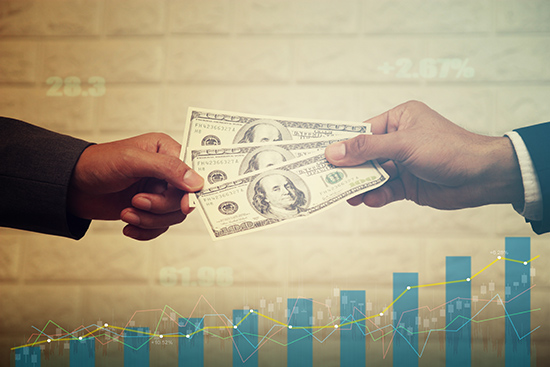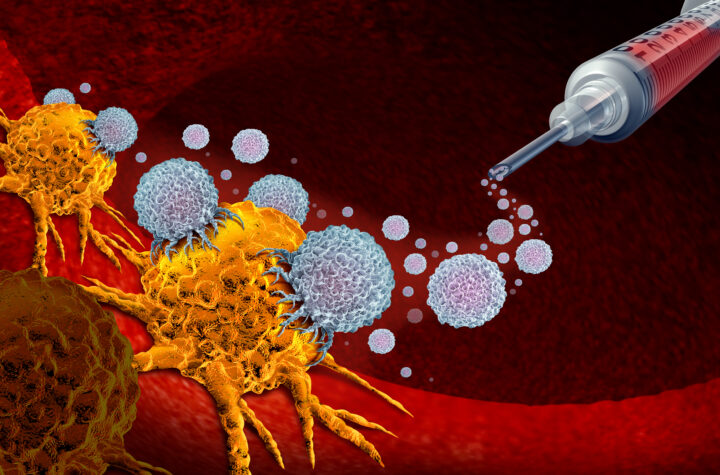The second hottest thing that I can do with my computer is to check my Etrade account for dividend payments. I particularly like to wake up, brew myself a steaming cup of coffee, open my brokerage account, and see what “magic money” has accrued in my account while I was sleeping. Except it’s not magic; its ownership. And I can teach you how to do it.
Over the next three posts, I will teach you, step by step, how to secure rock solid income producing securities that pay you month in and month out, whether you are working, sleeping, or laying on the beach. I will teach you how to get the best deal on these securities without taking too much risk. I will show you in simple terms why dividend investing isn’t just for Wall Street hotshots or genius MBAs. 8th grade arithmetic skills, a little patience, and a lot of desire are all you will need.
Ready to get started?
HEALTHCARE IS THE WAY
The world of income investing is wide and deep; there are many, many different kinds of securities that throw off regular income, in many different industries. Ford Motor pays a regular dividend; so does Walmart and even Microsoft. So why do I obsess over healthcare?
The simple answer lies in your medicine cabinet. If you are over 40 years of age, or know someone who is, it is more than likely that your medicine cabinet grows more filled with pills and potions by the year. Some are very expensive, some are cheap. Some are brand new on the market, and some were launched during the Nixon administration. None of that matters. All that matters is the following question; of the many medicines laying around your bathroom, how many are short term, and how many are, well, forever? Be honest with yourself. If like millions of Americans, you suffer from some combination of high blood pressure, high blood sugar, high cholesterol, depression, and or heartburn, the answer is: forever.
The pharmaceutical industry rarely cures diseases. Some have cracked up all kinds of conspiracy theories regarding this fact, some of which have merits. But the most inescapable, basic of fact cannot be wished away; as we grow older, our bodies slowly breakdown in ways small and large. The current state of science allows Big Pharma to retard this ageing process by propping us up for as long as possible. However, our best scientists have yet to master the actual underlying ageing process itself. As long as this is the case, you can bet your medicine cabinet will only get more and more full.
The regularity of your prescriptions means that Big Pharma can count on you, and millions and millions of Americans just like you, for ongoing revenue that be predicted with machine like precision.
One of the most important factors in income investing is corporate revenue streams that function like clockwork. Many healthcare companies fit this description.
TERMS YOU NEED TO KNOW
A lot of would be investors can’t get started because they feel lost. They hear analysts speaking on TV and it all sounds like Chinese. I don’t blame them! Investing is a language of its own. But the complexity of the jargon conceals an investing process that is surprisingly simple and straightforward. You may not believe me now, but evaluating a Big Pharma company really isn’t that different than evaluating the operations and earnings of your local hot dog stand. It’s just the jargon that makes it all seem so complex.
Let’s go over a few key terms and concepts. Once you master these few key terms and concepts, whole worlds will open up to you, and you will begin to pick dividend paying stocks with confidence. Would you believe me if I were to tell you that picking dividend investments can be fun?
DIVIDEND: This is the cash payment that a corporation makes to its shareholders on a regular basis (typically monthly or quarterly, although this can vary). This payment is NOT a fixed obligation. In other words, managment can raise the dividend, lower the dividend, or even, in extreme cases, eliminate the dividend based on a variety of business factors. That being the case, please remember that company directors HATE to cut dividends. It can be done, but is rare. More on this later.
CAPITAL GAINS: This is the way in which dividends are taxed under our current taxation regime. You may have heard much controversy in the media over people like Warren Buffett getting upset because rich executives are “taxed at a lower rate than their secretaries.” This is because most executives, and societal higher ups in general, are taxed on dividends rather than income they make working. Dividends are currently taxed at a rate of 15-20%, depending on a variety of factors and your overall tax profile. These rates are indeed low! Very sexy stuff for an investor, but not quite true that executives get taxed less than secretaries. As usual, the media has conveniently omitted some critical facts.
Let’s say that you own shares in Pfizer. Let’s say that Pfizer has a blockbuster year, and earns $10 Billion dollars. Pfizer must pay some kind of income tax on those earnings. Pfizer is notorious for taking every single legal measure to lower their corporate taxation rate, but believe me, they pay. Usually to the tune of billions. Or should I say that, YOU Pay. That is because when you own shares in Pfizer, you literally own a slice of the company. So, first you are taxed on your company’s bulk earnings.
Then, you are taxed AGAIN, when cash leaves Pfizer and is distributed to you in the form of a dividend. So, what many uneducated observes miss is that, the current low taxation rate on corporate dividends simply takes into account that Pfizer’s owners are being taxed twice.
Be that as it may, you personally will only have to pay 15%-20% taxes on your dividends. That feels awfully good next to what gets taken out of your paycheck when you WORK FOR the corporation instead of OWN the corporation.
DIVIDEND REINVESTMENT (DRIP): When you are issued a dividend on a quarterly or monthly basis, you have three choices. You can take the dividend and spend it. You can take the dividend and invest it in another security. Or you can take the dividend and reinvest it right in the same stock that produced the cash flow in the first place. This is called Dividend Reinvestment, and it creates a phenomenon called COMPOUNDING, which is one of the most powerful mathematical forces in the universe.
There are massive piles of academic evidence that suggest that one reason why the stock market has delivered eye popping returns over many decades is this compounding effect caused by dividend reinvestment. A program that automatically reinvests your dividends is called a DRIP. This example from the Motley Fool explains the flabbergasting power of DRIP programs over time:
To understand why it’s so important to reinvest your dividends, let’s consider one of my all-time favorite dividend stocks, Realty Income Corporation (NYSE:O). We’ll look at two scenarios that could have happened if you had invested $10,000 in the company at the time of its 1994 NYSE listing.
First, let’s see what would happen if you simply decided to take your dividends in cash. Since Realty Income has such a fantastic dividend history, your 930 shares would have produced more than $32,000 in dividend income. And, your shares would have appreciated in value to $52,150, for a total investment gain of more than $74,000. Not too bad, right?
Well, it sounds great until you consider what would have happened if you decided to reinvest your dividends instead. Over the past 22 years, with dividends reinvested through a DRIP, your original $10,000 investment would have grown to about $363,000 – nearly five times the investment gain of the first scenario. Even better, your shares (since you accumulated more along the way) would now be producing more than $15,300 in annual income.
DRIP programs may not be for everyone; many retirees simply want, or need, to live off of dividend income. But at least now you are aware that successful dividend reinvestment can power explosive growth over time.
PAYOUT RATIO: This is the gold standard measurement of safety in dividend investing. This can sound complicated, but is really quite easy to visualize with a little practice. Let’s make an example to illustrate why and how this ratio is used.
Big Pharma A earns $100 million this year by GAAP Accounting standards. (GAAP is short for Generally Accepted Accounting Practices, more on this later). They have one hundred million shares of ownership in the company, so this means that they earned $1 per share. Of this $1, they retain $.70, and pay out $.30 per share to shareholders in the form of dividends. With the $.70 that they retained, they can invest in new R&D, hire new executives to help grow the business, or even buy smaller companies.
Big Pharma B also earns $100 million this year, and also has one hundred million outstanding shares, meaning Big Pharma B also earned $1 per share. But Big Pharma B chooses to pay out $.70 and only keeps $.30. So now Big Pharma B only has $.30 per share to reinvest in the business.
Which of the two above companies would be more appealing to the educated dividend investor? The answer is “A.” Most researchers and financial planners look for companies that have a PAYOUT RATIO below 50%. To some degree, lower is better, so if the ratio is 30 to 40%, even better. Why?
INNOVATION, GROWTH, AND SAFETY
The ability to find pioneer new science and create new medicines is the lifeblood of Big Pharma companies. This research and development ain’t cheap. In fact, most of those medicines in your cabinet today cost $1 Billion or more to develop. So, if a company is paying out too much of its cash flow in the form of a dividend, then there is nothing left to invest, which could lead to long term decline.
Another reason why lower is better on payout ratios is because companies with lower ratios are not “maxed out,” and have room to raise dividends for the foreseeable future, even if actual profit growth isn’t great. Big Pharma B, in the example above, is paying out such a high percentage of its cash flow that, unless that cash flow keeps growing in a textbook perfect manor, it will have a hard time raising the dividend further. However, Big Pharma A is only paying out 30% of its profit. So, even if profits don’t go up in a smooth, predictable line, they will have wiggle room to raise their dividend for many years in the future. This foreseeable regularity is appealing to most income investors.
Lastly, Big Pharma B is also more vulnerable to shocks and disappointments. Lets say Big Pharma B is paying out 70% of its profit, and relies on four big products to produce the necessary cash flow to maintain the dividend. Suddenly the New York Times drops a bombshell expose revealing that one of these products causes grandmas to lose their hair (we have all read much worse…). Big Pharma B’s revenue suddenly dips. They have been paying out so much profit that they have no room for error! They have to cut the dividend to keep the company afloat, which can often unleash a whole host of negative consequences.
Meanwhile, if Big Pharma A gets unlucky and becomes the target of the New York Times, they may be rewarded for having conservatively managed their payout ratio. Profit may dip, but because they were only paying out 30% of the profit to begin with, they at least maintain the dividend payments, appeasing shareholders and fending off Wall Street raiders while the company sorts through its problems.
We will be focusing on the concepts of PAYOUT RATIO and CASH FLOW as we move forward with this series of posts.
So now we understand the reason why healthcare stocks are a great place to seek income. We are beginning to understand some of the key jargon and concepts that will help us hunt for income producing all star stocks. And if you have made it to the end of this post, then you certainly have the will to succeed as a dividend investor.
In our next post, we will explore specific tactics and strategies to craft a winning portfolio of dividend stocks in the healthcare field.









Is the 50% or lower PE ratio hold true specifically to the medical field where expensive research is essential to the company’s future? Is 70% more common/ acceptable in other fields?
50% is just my own rule. The more cash flow paid out, the less that can be reinvested in the company. No Big Pharma can survive without a steady flow of new drug discoveries, which aren’t cheap….